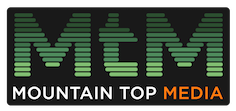Dennis Rodman joined forces with Hulk Hogan and the nWo at a moment in time in which pro wrestling became a major influence in pop culture.
By 1997, Dennis Rodman was a multiple-time NBA champion with the Detroit Pistons and Chicago Bulls, known as one of the best rebounders in NBA history. He was also a flamboyant, attention-demanding character off of the court, with extravagant attire and a rock star party attitude. He had a cool nickname, “The Worm,” and demanded your gaze with his flashy hair colors.
In professional wrestling, the nWo helped drive pro wrestling to its pinnacle in the 1990s, as the Monday Night Wars between WWF and WCW obtained massive TV ratings and infused wrestling so deeply into pop culture that fans all over the world wore nWo T-shirts, held up the Wolfpac hand sign, mimed “4 life” with their fingers and yelled “too sweeeeeeeet!” Although they were technically the villains of WCW’s ongoing storylines, in the scripted world of pro wrestling, the nWo felt real and made cheering the bad guys cool.
You couldn’t find a more natural pairing at that particular moment in time than wrestling and Rodman. It was an era in which wrestlers invaded “The Tonight Show” and “Saturday Night Live” and no one batted an eye. Wrestling was having a moment, and in line with the industry’s long and storied history of celebrity involvement, the nWo in particular lent itself to this approach very well.
Over the course of 10 episodes of ESPN’s The Last Dance, which documented the Bulls’ 1997-98 season, two key moments showed off Rodman’s approach to living the life that made him happiest, no matter the consequences — his 48-hour mid-season vacation and the night he flew from the NBA Finals to Monday Nitro.
Rodman made his WCW debut in March 1997 by joining the nWo. Rodman was the kind of guy that did what he wanted, while WCW benefited from having a major star among its ranks. Not only was Rodman willing to appear on TV, he actually wanted to wrestle, and he did — once a year from 1997 to 2000. The journey began at Bash at the Beach 1997, with Rodman teaming up with Hollywood Hogan to face The Giant and Lex Luger.
Normally, Rodman would reserve his matches for the summer, after the NBA season had concluded. He was part of the dynasty Chicago Bulls, a team that essentially punched its ticket to The Finals every year, which meant playing well into June. But as the Bulls were in the midst of chasing their sixth title, and buzz about that Bulls team being dismantled in the offseason hung over the process, Rodman decided he wanted to try something outlandish.
And that’s exactly what happened on June 8, 1998.
The night before, Rodman played in Game 3 of the NBA Finals as the Bulls continued their attempt to dispatch the Utah Jazz for the second straight year. The Worm posted 6 rebounds in 22 minutes as Chicago thrashed Utah 96-54 to go up 2-1 in the series — but the job was far from done.
From there Rodman skipped practice and got on a plane for WCW Monday Nitro at the Palace at Auburn Hills.
“I’ve got Phil Jackson calling me, going, ‘Where’s my guy at, where’s my guy at?'” recalled Hulk Hogan in a WWE Chronicle documentary on Rodman produced for the WWE Network. “I’m going, ‘Rodman, Phil Jackson keeps blowing up my phone, you gotta go back, [and Rodman] says, ‘I don’t wanna go back.'”
That night on Nitro, Rodman hit Diamond Dallas Page in the back with a steel chair, ultimately setting up a tag team match that would happen in July at Bash at the Beach.
DDP’s tag team partner in that match: Karl Malone, whom Rodman was covering all series.
“I couldn’t talk to Dennis and Karl about doing anything during play that would help promote WCW,” said WCW president Eric Bischoff in the same WWE Network documentary. “But someone may have said, ‘Hey guys, if you get an opportunity during stoppage to have any kind of animated conversation between you two, that would only help.'”
Rodman went back to join the Bulls after the Nitro appearance on Monday, faced a fine for missing the practice, and played Game 4 on Wednesday, which ended up being his best game of the series. The Bulls won 86-82 and took a 3-1 series lead. Rodman played 29 minutes, 38 seconds and grabbed 14 rebounds.
The Bulls would end up winning the championship in six games, and during the celebration, Rodman draped a nWo shirt on his lap as he sat next to his then-wife Carmen Electra and the Larry O’Brien trophy.
Less than a month later, Rodman and Hogan defeated Karl Malone and DDP at Bash at the Beach — a WCW pay-per-view that earned the thriving promotion its highest buy rate of the year.
Rodman had four total matches in his wrestling career — the two aforementioned tag team clashes, and two singles matches against Randy Savage the following year at WCW Road Wild 1999, and then in 2000 at an independent wrestling event in Australia, facing Curt “Mr. Perfect” Hennig.
Rodman then retired from wrestling, only to return for a short stint when he won on “Hulk Hogan’s Celebrity Championship Wrestling” reality show in 2008.
Was Rodman a technical wrestling genius? He didn’t need to be. He was entertaining, charismatic, demanded your attention and fit into sports entertainment like a glove. It was truly a perfect combination. Most athlete and celebrity appearances tend to happen once their careers are on a downswing or they’re blatantly promoting an upcoming project. Rodman, however, was still winning championships.
In the history of pro wrestling collaborations, Rodman and WCW has to be considered in the “Mount Rushmore” discussion.


